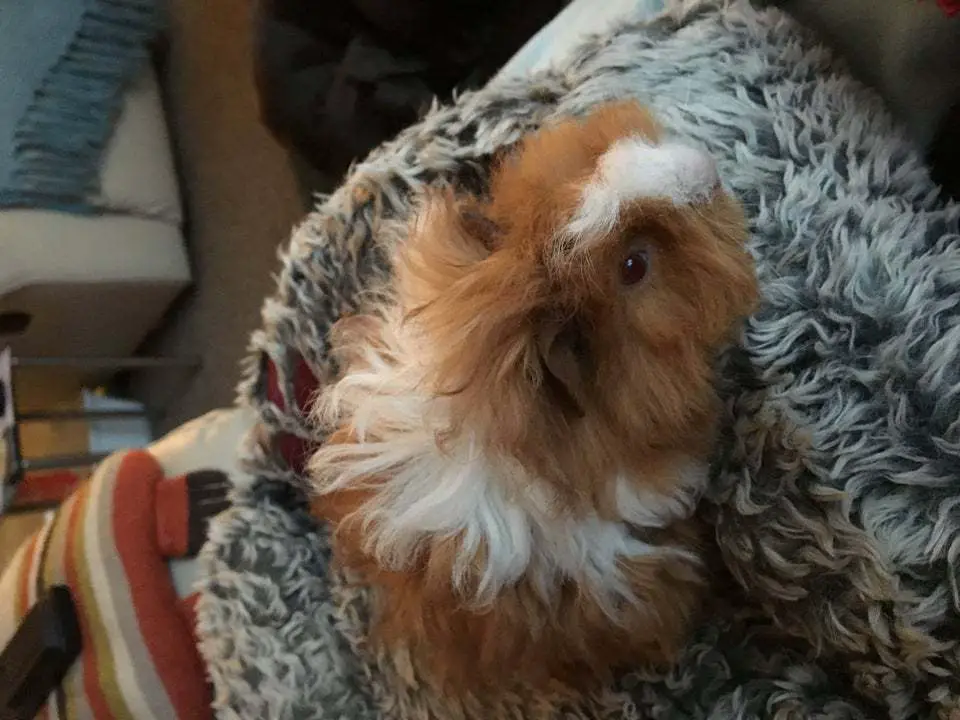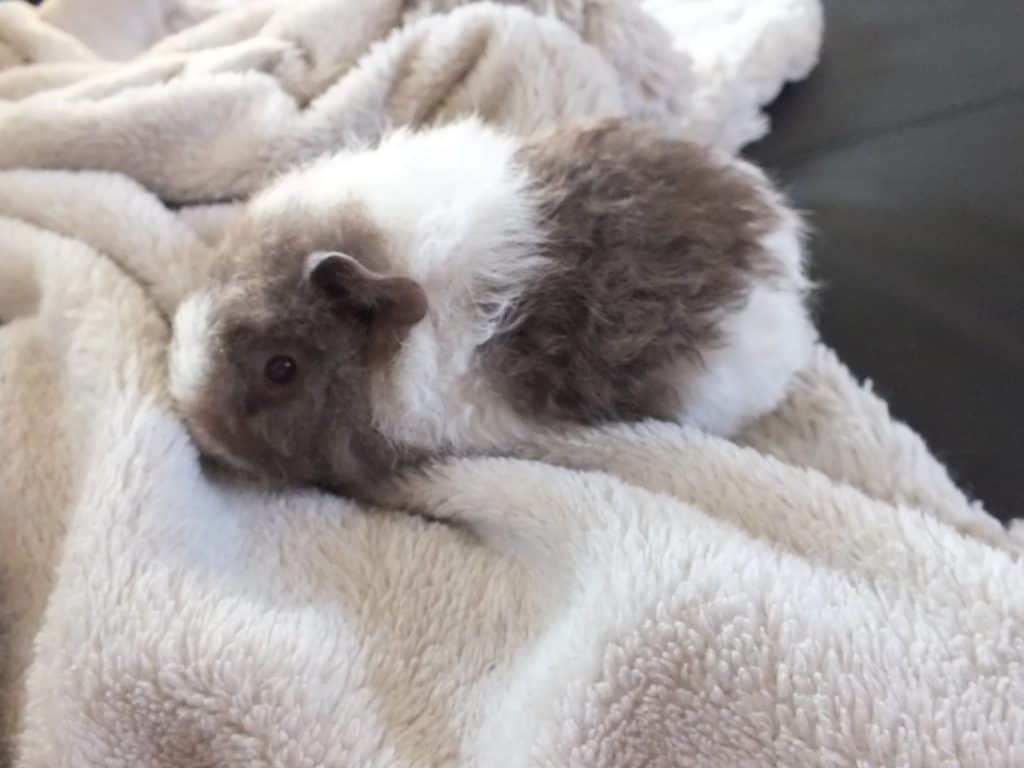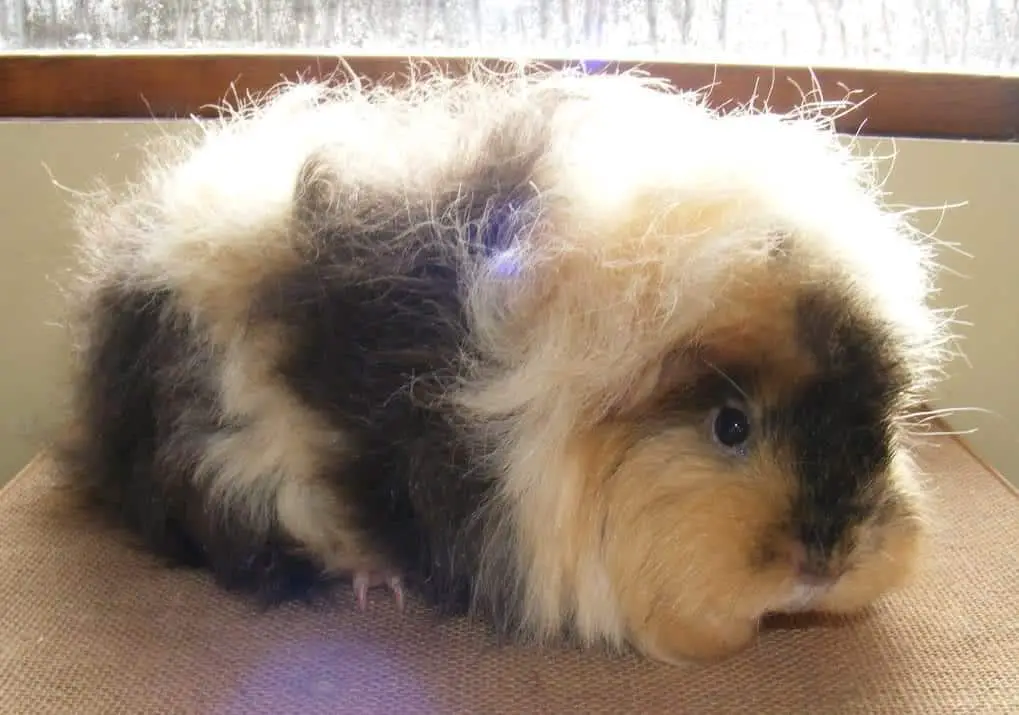Are you considering buying a Merino guinea pig as a pet, but are you not sure if it’s the right breed to buy? If your answer to this question is yes, you are in the right place. After all, there are many guinea pig breeds out there, so deciding which one you want can sometimes be challenging. This guide will provide you with an overview of everything you need to know about the Merino guinea pig, including its origins, appearance, care, and more. Stick around to learn more about this rare breed of guinea pig.
Guinea pigs seem timid initially, but they offer great companionship once they get used to you (and you to them!). They are very social animals that are affectionate and can form lasting, loving bonds with their owners. As you may already know, there are different breeds of guinea pigs, and they differ in characteristics, temperament, and appearance. A lot of cavy fans have their own preference when it comes to breeds, so it’s always good to do some orientation before deciding which one is for you.
However, having a guinea pig as a pet requires adequate care. You need to provide them with the proper foods, socialize with them and you will need to brush their hair and groom them regularly. Doing all of these things will help keep your guinea pig pet in an optimal, happy state. This guide will give you some tips to ensure you can do just that, let’s get into it!
History and Origin of the Merino Guinea Pig
The Merino guinea pig is not all that common of a breed. It’s a variant of the Texel breed that’s characterized by the crest on its head. The breed is also known as the English Merino, and Merino Peruvian.
Fun fact: there is also a sheep breed in northern Africa that shares the name “merino”, it’s unclear whether or not the guinea pig was named after the sheep, but it’s a reasonable assumption because of its curly hair! Take a look at this video and you’ll clearly see the resemblance!
The Merino is recognized in Europe as a standard breed, but unfortunately, the breed is not officially recognized by the American Cavy Breeders Association.
Appearance
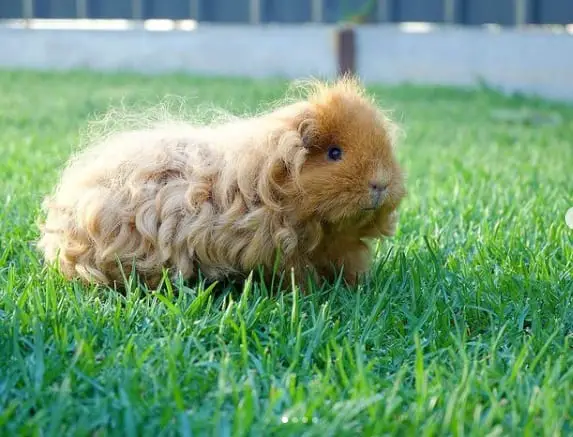
Just like a Texel guinea pig, a Merino guinea pig has long curly hair. The resemblance is so striking, that it can sometimes be hard to tell the difference between them. If you’re having trouble telling a Texel and Merino apart, look for the crest on the head, if it has one, it’s a Merino.
The coat of the Merino is soft and spring-like and comes in many colors. The head rosette is deep and has a pointed center. The hair of the Merino is long and curly. The cavy has a short and broad head, with a crest on its forehead. The Merino is among the smallest breeds of guinea pigs. An adult measures only four to eleven inches, with the males usually being larger in size than the females.
To get a better idea of what the Merino guinea pig looks like, here are some beautiful pictures to feast your eyes on:
Temperament of the Merino Guinea Pig
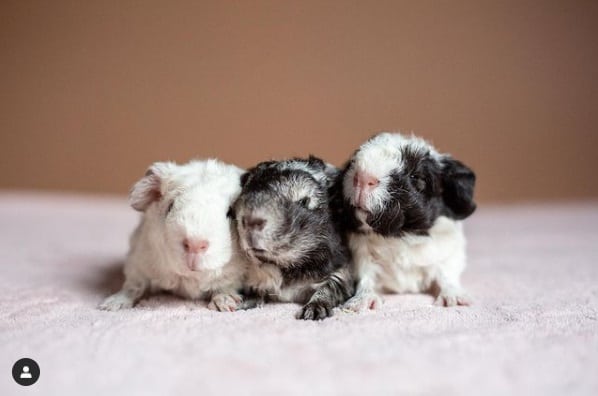
The Merino guinea pig is well known for its calm and loving temperament, which is one of the reasons why they’re such a popular breed. They can form bonds with their owners and are generally easy-going. However, in order to keep your Merino happy, they need a companion. All guinea pigs, including merinos, have their roots in the Andes in South America, where they live in colonies. Because of that, they are social animals that need companionship. So, it is best to buy Merino in pairs to avoid them getting lonely.
One thing to be careful of when getting a pair of guinea pigs (and you’re not a breeder) is that you get two of the same sex to prevent unwanted surprises (such as a litter of baby guinea pigs).
Care
Merinos are relatively high maintenance pets, and might therefore not be suitable for a first-timer looking to raise a guinea pig. Due to the large amount of curly hair on their body, Merinos require a lot of grooming. Because they have so much hair, excrement may sometimes stick to their hair. To prevent this, it is advisable to trim their hair regularly. It’s also recommended to bathe your Meringo Guinea Pig about once a month. Do be careful though when giving your cavy a bath, they’re scared of deep water!
Like other breeds of guinea pigs, you should trim their nails regularly. Also, you need to brush their hair regularly to prevent the accumulation of dirt in their coat. While brushing their hair, do so very gently, they’re quite sensitive creatures.
Cost
The cost of getting a Merino guinea pig is similar to that of other breeds. However, since they are rarer than other breeds, their price may be a little higher and you might have a harder time finding one for sale. Unlike other breeds, you’re unlikely to find a Meringo in a pet store.
If you do find a breeder that has a Meringo for sale, you should be able to buy one for around $30 to $70. Do keep in mind though, that it’s recommended to get two guinea pigs, to prevent them from getting lonely, so you will have to buy two guinea pigs.
Furthermore, the largest costs associated with owning any guinea pig are not so much buying the pig itself, but rather the monthly costs of food, vet bills, bedding, toys, and more. Expect to pay around $40-$60 a month to take adequate care of your guinea pigs.
Meringo Guinea Pig Diet
Guinea pigs are herbivores so they should only eat plants. Do not feed them meat.
A Merino’s diet should contain at least 75 percent hay, while the remaining 25 percent can be fruits, vegetables, and pellets, or the occasional treat. Merinos have a sensitive digestive system. They may face digestive issues if they eat any foods that are not part of their natural diet. That is why it is important that you avoid giving them processed foods. Processed foods usually contain sugar and fats, which are not good for the digestive system of a Merino.
Like other guinea pigs, a Merino cannot produce its own vitamin C. So, it is important that you include vitamin C supplements in your pet’s diet to prevent vitamin C deficiency. Once you notice symptoms like appetite loss, weakness, rough coat, and difficulty walking in a Merino, you know it lacks vitamin C. Make sure you regularly include vitamin C supplements in their diets. In addition, you should avoid giving them excessive veggies and fruits, because the high water content can lead to issues such as diarrhea. It’s recommended to stick to the 75% hay, 25% fruits/veggies ratio.
Lifespan
In terms of lifespan, a Merino is similar to other breeds of guinea pigs. A Merino can live anywhere from four to seven years. It’s important to understand that the level of care a guinea pig receives plays a crucial role in its lifespan. A Merino that is well taken care of may live up to seven years, while a Merino that is not well taken care of may not live up to its full lifespan.
Merino guinea pigs generally have good health. They are usually healthy and active animals. However, they’re not invincible and like other breeds, they can become sick. If you notice that your cavy is not feeling well, bring it to a vet for a checkup.
Final words
A Merino guinea pig is an excellent choice of pet for someone looking to take care of a curly, hairy, loving little guinea pig. It’s a very loveable animal that most people will enjoy having as a pet. However, there’s quite a bit of work involved in taking proper care of them, and truth be told, it is a pet that requires high maintenance. Due to its long curly hair, you will have to clean, brush, and trim its hair regularly. In addition, their nails will need to be trimmed around once a month.
If you’re willing to put in the work, I’m sure you and your beautiful new guinea pigs can become a great team and the best of friends!
- How Long Do American Eskimo Dogs Live? Important Factors and Care Tips - September 29, 2023
- Do American Bulldogs Need Grooming? Essential Tips and Care Guidelines - September 29, 2023
- Do Bengal Cats Enjoy Playing? Essential Tips for Keeping Them Active - September 29, 2023
